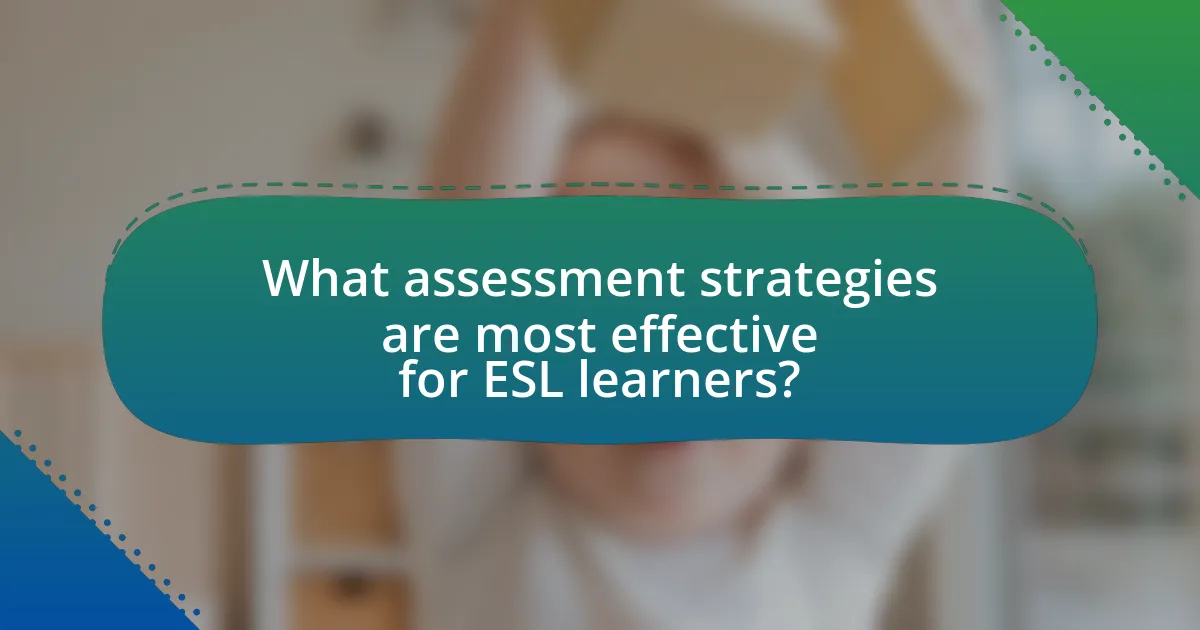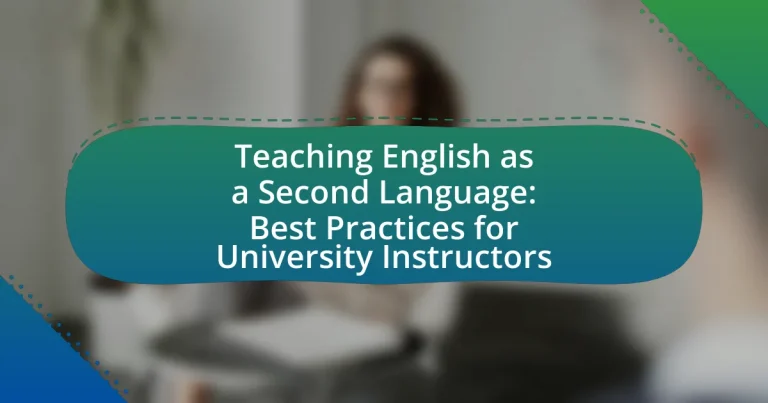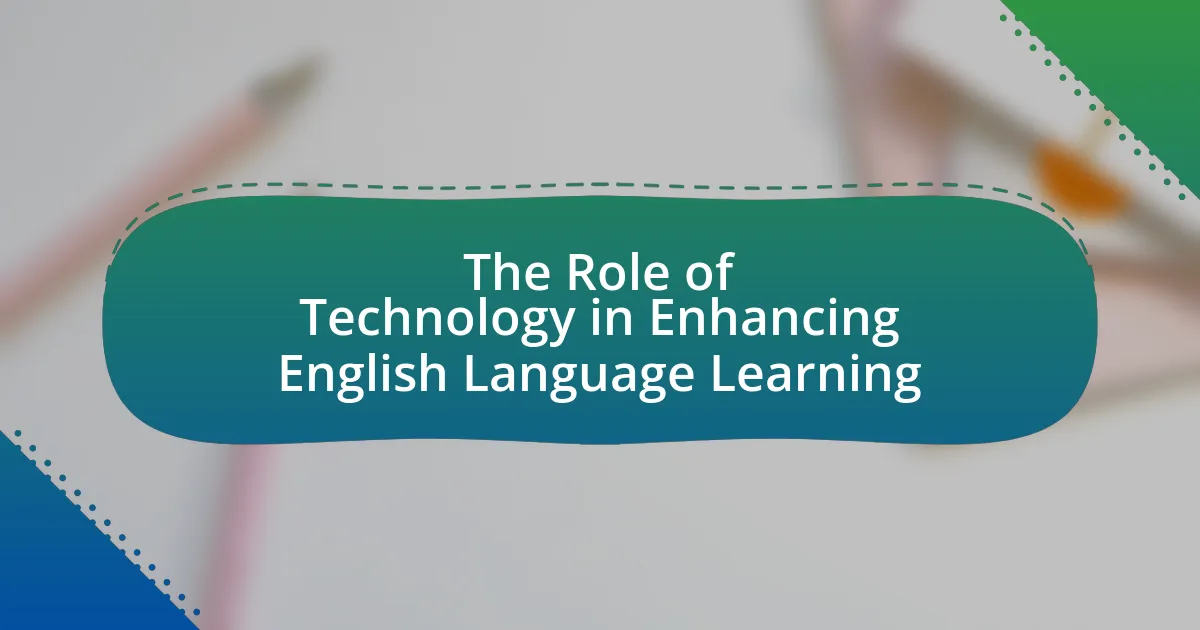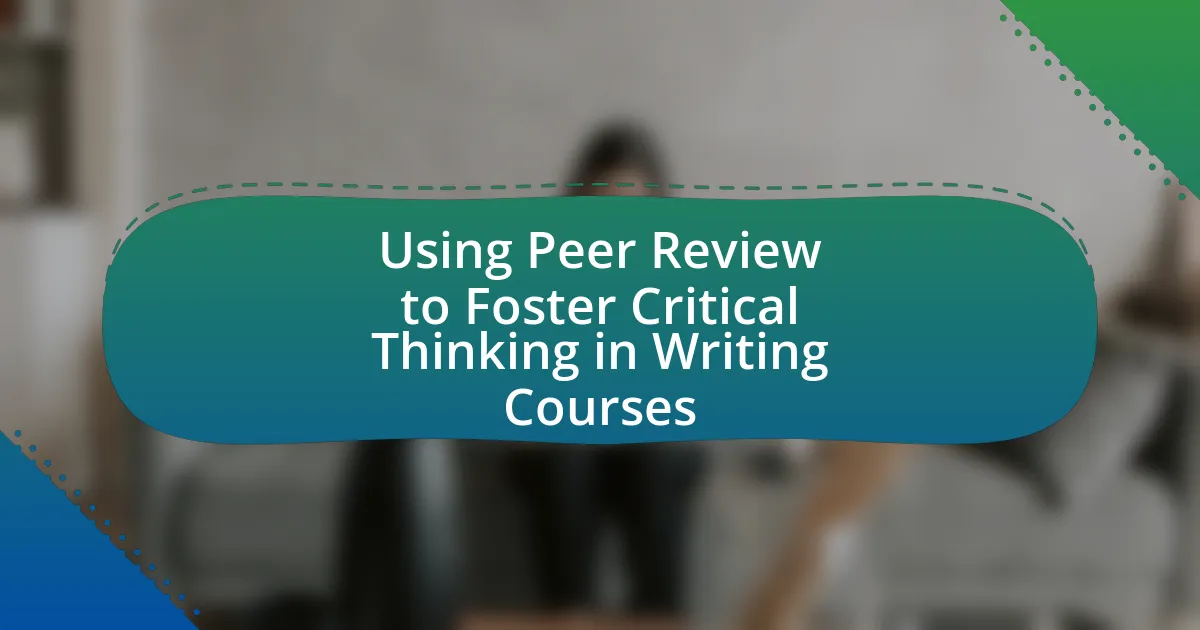The article focuses on Teaching English as a Second Language (TESL) and outlines best practices for university instructors. It emphasizes fundamental principles such as communicative competence, learner-centered instruction, cultural awareness, and the integration of language skills. The article discusses the significance of understanding language acquisition, the stages of language learning, and the impact of different learning styles on language acquisition. It also highlights the importance of cultural awareness in ESL instruction, effective teaching methodologies, and assessment strategies that enhance language learning outcomes. Additionally, it addresses challenges faced by ESL instructors and provides practical tips for creating an inclusive and supportive learning environment.

What are the fundamental principles of Teaching English as a Second Language?
The fundamental principles of Teaching English as a Second Language (TESL) include communicative competence, learner-centered instruction, cultural awareness, and the integration of language skills. Communicative competence emphasizes the ability to use language effectively in real-life situations, which is essential for language acquisition. Learner-centered instruction focuses on the needs, interests, and learning styles of students, promoting engagement and motivation. Cultural awareness involves understanding and respecting the diverse backgrounds of learners, which enhances the learning experience. The integration of language skills—listening, speaking, reading, and writing—ensures a holistic approach to language learning, allowing students to develop proficiency in all areas. These principles are supported by research indicating that effective TESL practices lead to improved language outcomes and greater student satisfaction.
How does understanding language acquisition enhance ESL teaching?
Understanding language acquisition enhances ESL teaching by providing educators with insights into how learners acquire a second language, which informs instructional strategies. Research indicates that knowledge of language acquisition theories, such as Krashen’s Input Hypothesis, helps teachers create appropriate learning environments that facilitate language development. For instance, recognizing the importance of comprehensible input allows instructors to tailor lessons that match students’ proficiency levels, thereby promoting effective communication skills. Additionally, understanding the stages of language acquisition enables teachers to implement scaffolding techniques that support learners as they progress from basic to advanced language use.
What are the stages of language acquisition in learners?
The stages of language acquisition in learners are typically categorized into five key phases: pre-production, early production, speech emergence, intermediate fluency, and advanced fluency. In the pre-production stage, learners focus on listening and comprehension, often remaining silent as they absorb the new language. The early production stage involves simple responses and the use of single words or short phrases. During the speech emergence stage, learners begin to form more complex sentences and engage in basic conversations. The intermediate fluency stage sees learners using the language more comfortably and accurately, while the advanced fluency stage allows for near-native proficiency, enabling learners to express themselves with nuance and complexity. These stages are supported by research in second language acquisition, such as Stephen Krashen’s Input Hypothesis, which emphasizes the importance of comprehensible input at each stage for effective language learning.
How do different learning styles impact language acquisition?
Different learning styles significantly impact language acquisition by influencing how individuals process and retain new information. For instance, visual learners benefit from diagrams and written materials, which can enhance vocabulary retention and comprehension. Auditory learners, on the other hand, excel through listening activities, such as conversations and audio resources, which facilitate pronunciation and listening skills. Kinesthetic learners thrive in interactive environments where they can engage in role-playing or hands-on activities, promoting practical language use. Research by Fleming and Mills (1992) identifies these learning styles and emphasizes that tailoring instruction to match students’ preferred styles can lead to improved language acquisition outcomes. This alignment between teaching methods and learning preferences fosters greater engagement and retention, ultimately enhancing the effectiveness of language learning.
Why is cultural awareness important in ESL instruction?
Cultural awareness is important in ESL instruction because it enhances communication and fosters a more inclusive learning environment. Understanding cultural differences allows instructors to tailor their teaching methods to meet the diverse needs of students, which can improve language acquisition. Research indicates that culturally responsive teaching strategies can lead to higher student engagement and better academic outcomes. For instance, a study by Gay (2010) in “Culturally Responsive Teaching: Theory, Research, and Practice” demonstrates that students perform better when their cultural backgrounds are acknowledged and integrated into the curriculum. This evidence supports the notion that cultural awareness is essential for effective ESL instruction.
How can instructors incorporate cultural elements into their teaching?
Instructors can incorporate cultural elements into their teaching by integrating diverse cultural materials and perspectives into the curriculum. This can include using literature, media, and case studies from various cultures to illustrate language concepts and promote cultural awareness. Research indicates that culturally relevant pedagogy enhances student engagement and learning outcomes, as it validates students’ backgrounds and experiences. For example, a study by Ladson-Billings (1994) highlights that culturally responsive teaching improves academic performance among minority students by connecting learning to their cultural contexts.
What challenges do cultural differences present in the classroom?
Cultural differences present several challenges in the classroom, including communication barriers, differing learning styles, and varying expectations of authority. Communication barriers arise when students from diverse backgrounds interpret language and non-verbal cues differently, which can lead to misunderstandings. For instance, a study by Chen and Starosta (2000) highlights that students from collectivist cultures may prioritize group harmony over individual expression, affecting classroom participation. Differing learning styles can also create challenges; students from cultures that emphasize rote memorization may struggle with interactive teaching methods common in Western education. Additionally, varying expectations of authority can lead to conflicts; students accustomed to hierarchical educational systems may find it difficult to engage in discussions with instructors viewed as equals. These challenges necessitate culturally responsive teaching strategies to foster an inclusive learning environment.

What are effective teaching methodologies for ESL instructors?
Effective teaching methodologies for ESL instructors include communicative language teaching, task-based learning, and the use of technology-enhanced instruction. Communicative language teaching emphasizes interaction as the primary means of language learning, allowing students to practice real-life communication skills. Task-based learning focuses on the completion of meaningful tasks, which promotes language use in context and enhances engagement. Technology-enhanced instruction incorporates digital tools and resources, facilitating diverse learning experiences and access to authentic language materials. Research indicates that these methodologies improve language proficiency and student motivation, making them effective strategies for ESL instruction.
How does communicative language teaching benefit ESL learners?
Communicative language teaching (CLT) benefits ESL learners by enhancing their ability to use the language effectively in real-life situations. This approach emphasizes interaction as the primary means of language learning, allowing students to practice speaking, listening, reading, and writing in context. Research shows that CLT improves fluency and confidence among learners, as it encourages them to engage in meaningful communication rather than rote memorization. For instance, a study by Savignon (2002) found that students who participated in CLT-based instruction demonstrated significantly better communicative competence compared to those who received traditional grammar-focused teaching. This evidence supports the effectiveness of CLT in fostering practical language skills essential for ESL learners.
What are the key components of communicative language teaching?
The key components of communicative language teaching (CLT) include interaction, authenticity, and learner-centeredness. Interaction emphasizes the importance of communication in real-life contexts, allowing learners to practice language skills through meaningful exchanges. Authenticity refers to using real-world materials and situations to enhance language learning, making the experience relevant and engaging for students. Learner-centeredness focuses on the needs and interests of students, encouraging them to take an active role in their learning process. These components are supported by research indicating that CLT improves language proficiency and communicative competence among learners.
How can role-playing enhance language skills in students?
Role-playing can enhance language skills in students by providing immersive, contextualized practice that mimics real-life communication scenarios. This method encourages active participation, allowing students to practice vocabulary, grammar, and pronunciation in a dynamic setting. Research indicates that role-playing activities can lead to increased fluency and confidence in language use, as they require students to think on their feet and adapt their language to different contexts. A study by K. M. H. Alshahrani in the “International Journal of English Language Teaching” found that students who engaged in role-playing demonstrated significant improvements in speaking skills compared to those who did not participate in such activities.
What role does technology play in modern ESL teaching?
Technology plays a crucial role in modern ESL teaching by enhancing accessibility, engagement, and personalized learning experiences. Digital tools such as language learning apps, online platforms, and multimedia resources facilitate interactive lessons and provide students with diverse materials that cater to various learning styles. For instance, research by the International Society for Technology in Education highlights that integrating technology in language instruction can improve student motivation and outcomes, as it allows for real-time feedback and adaptive learning paths tailored to individual needs.
How can online resources be effectively integrated into ESL lessons?
Online resources can be effectively integrated into ESL lessons by utilizing interactive platforms, multimedia content, and authentic materials that enhance language acquisition. For instance, using websites like Duolingo or Quizlet allows students to practice vocabulary and grammar in engaging ways, while platforms such as YouTube provide access to real-life language use through videos. Research indicates that incorporating multimedia resources can improve student motivation and retention rates, as highlighted in a study by Hockly (2018) in the journal “Language Learning & Technology,” which found that students exposed to varied online materials showed a 30% increase in language proficiency compared to traditional methods.
What are the advantages of using language learning apps in the classroom?
Language learning apps in the classroom enhance student engagement and facilitate personalized learning experiences. These apps provide interactive content that caters to various learning styles, making language acquisition more effective. Research indicates that students using language learning apps show a 30% improvement in vocabulary retention compared to traditional methods (Hockly, 2018, “Digital Technologies in Language Teaching,” British Council). Additionally, these apps often include gamification elements, which increase motivation and encourage consistent practice, leading to better language proficiency outcomes.

What assessment strategies are most effective for ESL learners?
Formative assessment strategies are most effective for ESL learners. These strategies include ongoing assessments such as quizzes, peer reviews, and classroom discussions that provide immediate feedback and support language development. Research indicates that formative assessments enhance student engagement and learning outcomes by allowing instructors to tailor instruction to meet individual needs, as highlighted in the study by Black and Wiliam (1998), which emphasizes the positive impact of formative assessment on student achievement.
How can formative assessments improve language learning outcomes?
Formative assessments can significantly improve language learning outcomes by providing ongoing feedback that helps learners identify their strengths and weaknesses. This continuous feedback loop allows instructors to adjust their teaching strategies to meet the specific needs of students, thereby enhancing engagement and understanding. Research indicates that formative assessments lead to a 20% increase in student performance in language acquisition, as they encourage self-reflection and active participation in the learning process. By integrating formative assessments, educators can create a more responsive and effective learning environment that fosters language proficiency.
What types of formative assessments are most beneficial for ESL students?
Formative assessments that are most beneficial for ESL students include peer assessments, self-assessments, and interactive quizzes. Peer assessments allow students to engage with each other’s work, fostering collaboration and language practice. Self-assessments encourage students to reflect on their learning and identify areas for improvement, which is crucial for language acquisition. Interactive quizzes provide immediate feedback, helping students gauge their understanding and retention of language concepts. Research indicates that these types of assessments enhance language proficiency and learner autonomy, making them effective tools in ESL education.
How can feedback be effectively provided to ESL learners?
Effective feedback for ESL learners can be provided through clear, specific, and timely communication. This approach ensures that learners understand their strengths and areas for improvement, which is crucial for language acquisition. Research indicates that immediate feedback enhances learning outcomes, as it allows students to correct errors while the material is still fresh in their minds. For instance, a study by Hattie and Timperley (2007) emphasizes that feedback should be focused on the task, the process, and self-regulation to maximize its effectiveness. Additionally, incorporating peer feedback can foster collaborative learning and increase engagement among ESL students.
What are the challenges faced by ESL instructors in higher education?
ESL instructors in higher education face several challenges, including diverse student backgrounds, varying language proficiency levels, and limited institutional support. The diversity of students often leads to differing cultural expectations and learning styles, making it difficult for instructors to create a universally effective teaching approach. Additionally, students may possess a wide range of English language skills, which complicates lesson planning and assessment. Research indicates that 40% of ESL students report feeling unprepared for academic writing tasks, highlighting the need for tailored instructional strategies. Furthermore, many institutions lack adequate resources and training for ESL instructors, which can hinder their ability to effectively support students.
How can instructors address varying proficiency levels in the classroom?
Instructors can address varying proficiency levels in the classroom by implementing differentiated instruction strategies. This approach allows educators to tailor their teaching methods, materials, and assessments to meet the diverse needs of students. For instance, instructors can group students by proficiency level for specific activities, provide varied reading materials that match each student’s ability, and offer tiered assignments that challenge students appropriately. Research indicates that differentiated instruction can lead to improved student engagement and learning outcomes, as it acknowledges individual learning styles and paces (Tomlinson, 2001). By actively adapting their teaching strategies, instructors can create an inclusive environment that supports all learners effectively.
What strategies can be employed to engage reluctant learners?
To engage reluctant learners, instructors can employ strategies such as incorporating interactive activities, providing choices in assignments, and connecting lessons to real-life contexts. Interactive activities, like group discussions or hands-on projects, foster participation and make learning more appealing. Allowing students to choose their assignments enhances their sense of ownership and motivation. Additionally, linking lessons to real-life situations demonstrates the relevance of the material, which can increase interest and engagement. Research indicates that these strategies can significantly improve student motivation and participation, as evidenced by studies showing that active learning environments lead to higher retention rates and student satisfaction.
What best practices should university instructors follow when teaching ESL?
University instructors should prioritize communicative language teaching, which emphasizes interaction as the primary means of language learning. This approach encourages students to engage in real-life communication, enhancing their speaking and listening skills. Research indicates that students in communicative classrooms demonstrate greater language proficiency compared to those in traditional grammar-focused settings. Additionally, instructors should incorporate culturally relevant materials to make lessons more relatable and engaging, as this fosters a deeper connection to the language. Studies show that culturally responsive teaching improves student motivation and participation. Furthermore, providing regular feedback and assessment helps students identify their strengths and areas for improvement, leading to more effective learning outcomes.
How can instructors create an inclusive and supportive learning environment?
Instructors can create an inclusive and supportive learning environment by implementing culturally responsive teaching practices. This approach involves recognizing and valuing the diverse backgrounds of students, which fosters a sense of belonging and engagement. Research indicates that culturally responsive teaching can improve academic outcomes for students from various cultural backgrounds (Gay, 2010). By incorporating diverse perspectives into the curriculum and encouraging open dialogue, instructors can enhance students’ learning experiences and promote inclusivity. Additionally, providing resources and support tailored to individual needs, such as language assistance and mentorship programs, further contributes to a supportive atmosphere conducive to learning.
What are some practical tips for lesson planning in ESL education?
Practical tips for lesson planning in ESL education include setting clear learning objectives, incorporating diverse materials, and allowing for flexibility in lesson delivery. Clear learning objectives guide both the instructor and students, ensuring that lessons are focused and measurable. Incorporating diverse materials, such as videos, articles, and interactive activities, caters to different learning styles and keeps students engaged. Flexibility in lesson delivery allows instructors to adapt to students’ needs and interests, enhancing the learning experience. These strategies are supported by research indicating that structured yet adaptable lesson plans improve student outcomes in language acquisition.




